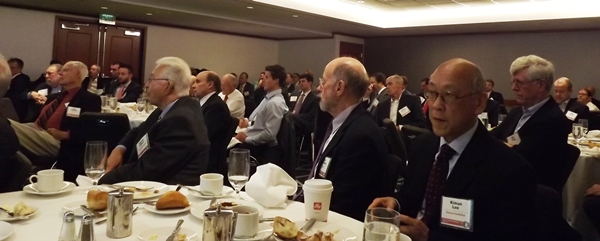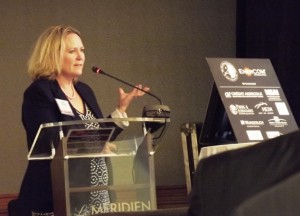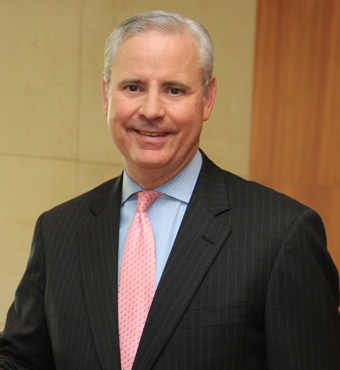EnerCom’s San Francisco Conference Wrap-Up – Part II
We have a new strategic petroleum reserve sitting under us
EnerCom presented the 14th edition of The Oil & Services Conference™ in San Francisco last week. The conference delivered the current thinking of c-suite E&P and energy technology executives along with well-known industry and financial experts. The conference took the March 2016 pulse of the North American oil and gas industry.

Common themes from most of the morning E&P presenters which included Sanchez Energy Corp. (ticker: SN; SanchezEnergyCorp.com), Panhandle Oil & Gas (ticker: PHX; PanhandleOilandGas.com), PetroQuest Energy (ticker: PQ; PetroQuest.com), Resolute Energy (ticker: REN; ResoluteEnergy.com) and Tamarack Valley Energy (ticker: TVE; TamarackValley.ca), reflected the E&P industry’s relentless drive to achieve cost savings, gain operational and G&A efficiencies, clean up balance sheets and improve liquidity in a $30 +/- price environment. Core Laboratories (ticker: CLB; CoreLab.com) chairman, president and CEO David Demshur, and EVP and chief financial officer Richard Bergmark, gave the Core Lab complete history and financial summary, a company that has been successfully providing reservoir analysis and optimization to E&P companies for 80 years.
“Creating a Sustainable Business” was the title of the presentation of Tamarack Valley Energy. In his presentation, Tamarack CEO Brian Schmidt showed a bold slide that clearly lists his company’s previously-stated six-month objectives and showed how management either succeeded or failed to achieve them in the period. Schmidt commented that this was his investors’ favorite slide.
The conference’s energy and commodities experts included Greg Barnett, president of EnerCom Consulting, John Gerdes, head of Research for KLR Group, and Fredrik Andersen, first VP of DNB Bank. These presenters discussed global energy supply and demand, commodities prices and hedging strategies.
Things shifted to a global focus when lunch presenter Tom Petrie, chairman of Petrie Partners took the podium. Petrie’s talk was entitled “The Long-Term Implications of Seeking Market Share by Members of OPEC and Russia.”
In his talk, Petrie took a moment to reflect on the effects that lifting the crude oil export ban will have on Bakken, Eagle Ford, Niobrara and Permian oil producers and the U.S. overall. A few of Petrie’s comments on this topic are in the short video below.
Industry experts included Brian Uhlmer, managing director of GMP securities, who answered the question, “Where Should Investors Invest when Investing in the OFS Space?” Mike Smolinski, president of Energy Directions and NAPIA talked about “The U.S. Natural Gas Industry—Opportunities if You’re Paying Attention,” and Michael Cooper of Haynes and Boone with a discussion of “Remedies that Midstream Companies Have with Production Shortfalls of Contracted E&P Volumes.”

After Petrie’s discussion of the OPEC-created price crash that resulted in today’s global market conditions, Evolution Petroleum (ticker: EPM; EvolutionPetroleum.com), Blackbird Energy (ticker: BBI, BlackbirdEnergyInc.com) and Manitok Energy’s (ticker: MEI, ManitokEnergy.com) CEOs presented their companies, followed by BetaZi, a private oil and gas technology company that has created data analysis software that it uses to help E&Ps, private equity firms and other financial institutions vet deals, plot accurate type curves and analyze the results of oil and gas wells and fields with a more detailed and comprehensive manner of reporting than anything else currently available on the market.
A new conference presenter with a reasonably contrarian twist was Petro River Oil Corp. (ticker: PTRC; PetroRiverOil.com), a junior E&P that is flying in the face of the industry’s love affair with shale by ignoring shale and investing in a portfolio of conventional, vertically drilled plays in Kern County, California, and Osage County, Oklahoma. Petro River has collected acreage that is adjacent to large, mature, legacy plays. Petro River has an opportunity for some potential excitement in Northern Ireland this summer through its participation (~12%) in the first exploration test well of the Larne Basin in 40 years, buoyed by the science team’s interpretation of existing 2D seismic data.
Brian Uhlmer of GMP Securities, brought attention to a company that he described as having “a game changing technology,” a device called a pressure exchanger from a company called Energy Recovery (ticker: ERII; EnergyRecovery.com). Uhlmer reported that it could increase pump life by three times and it’s a proven technology that’s never been brought to the energy market.
HAL + BHI Not Going to Happen: Uhlmer
In an interview following his presentation, Uhlmer told Oil & Gas 360® that he didn’t think the Halliburton-Baker Hughes merger would ultimately go through, with the EU pushing back, Norway against it, the U.S. demanding divestitures and other forces pressuring the deal. Uhlmer said he believed the oilfield service industry was becoming technology-driven, and he expected to see Silicon Valley style incubators creating a world of new technologies for oil and gas. “It’s going to be a tighter market in the next 3-5 years; the technology angle is evolving; offshore and subsea services will evolve. The parts of the industry that make it will be differentiated by technology.” He described Weatherford as a commoditized service provider, where HAL, BHI and SLB are technology differentiated. Uhlmer was calling for the industry to see “a total rig count of 900 by the back half of 2017.”

Mike Cooper, CPA and counsel for Haynes and Boone, spoke with Oil & Gas 360® about the current state of MLPs in the midstream segment of the business. “We’ve had the evolution of midstream MLPs. They were supposed to be providers of a steady income that was almost immune to swings in commodities prices by being fee-based for transporting petroleum products and natural gas and liquids through the pipelines they own. But as it turns out, the midstream MLPs are dependent on the performance of the E&P companies.
“When commodities prices go down, the producers dial back their CapEx, they drill less, and that steady revenue stream to the pipeline companies goes down. And there’s no way to replace it. It’s the same with royalty MLPs: you need to continue to feed the beast. You constantly need to have more wells and more production continually feeding the beast.”
Cooper said the question the midstream companies need to ask is, “How long will your lenders last?” He said we could see consolidations of bigger pipeline systems that are highly leveraged. “The smaller guys are in a better position to ride this out.” Cooper said he believed we might expect to see some of the E&Ps buying the parts of the pipeline systems they depend on. Which led to a discussion of oil and gas companies finding ways to diversify.
“They can diversify by play and by basin,” Cooper said of the E&P companies. Some of the companies can diversify into products – feedstocks for plastics and other products, for instance. Some of the E&Ps may invest in midstream pipeline systems.
No Industry is More Adaptable than Oil & Gas
“No industry is more adaptable than oil & gas,” Cooper said. “It’s an industry that can turn on a dime. When you think about it, we have a ‘new strategic petroleum reserve’ sitting under us.”
Editor’s Note: Part I of the conference coverage is available here. The EnerCom 2016 San Francisco conference presentations may be downloaded here. Archived conference presentation webcasts may be listened to here.







